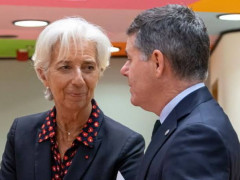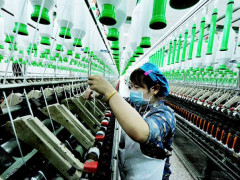China's Trade Weakens as Global Demand Falters
Economy news
1 year ago

China's exports and imports slowed in August, with growth badly missing forecasts as surging inflation hobbled overseas demand and more COVID-19 lockdowns disrupted local output.
Exports climbed 7.1% in August from a year earlier, slowing from an 18.0% gain in July, marking the first slowdown since April. China’s outbound trade had outperformed other economic drivers this year, but now faces headwinds from rising interest rates, inflation, and geopolitical tensions that have reduced global demand.
Reacting to the data, China's yuan lost 0.36% to trade at 6.98 per dollar. Despite sitting at two-year lows, the weak yuan has failed to give the country's exports a competitive edge.
Weak domestic demand is also hurting China. Impacted by the worst heatwave in decades, a real estate crisis, coronavirus lockdowns, and depressed consumption, imports have slowed markedly.
Inbound shipments rose just 0.3% in August from 2.3% in the month prior, meaning that both imports and exports grew at their slowest pace in four months.
What does this mean for me?
The disappointing August trade figures showed up in the country’s narrow trade surplus of $79.39 billion, compared with a record $101.26 billion surplus in July.
Chinese policymakers are trying to shore up the flagging economy. The central bank said it would cut the amount of foreign exchange reserves financial institutions must hold, a move aimed at slowing the yuan's recent declines. FOREX traders should wait to see if the central bank’s interventions influence the yuan.
More news




ECB May Cut Rates Before the Fed
13 hours ago

Copper Prices Surge, Promise Bull Market
1 week ago

Cocoa Prices Skyrocket, Breach $10,000 Mark
3 weeks ago
Carousel
Do you need help or have a question?
















